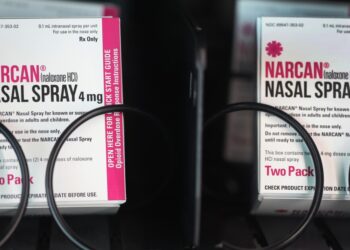In the year since the U.S. Supreme Court reversed Roe v. Wade, 14 states have banned most abortions, but even more have moved to protect abortion rights in various ways.
Eleven states have passed so-called “shield laws,” which can safeguard providers and patients against prosecution from other states. And at least 15 municipalities and six state governments allocated nearly $208 million to pay for contraception, abortion and support services according to data provided to NPR by the National Institute for Reproductive Health.
Some states have opened new clinics and have become destinations for people seeking an abortion as new research shows just how difficult it has become to get in-person care.
California embraces role as ‘sanctuary’ state
Following the Dobbs decision, California lawmakers moved quickly to shore up protections for abortions and become a “sanctuary” for people who live in places with new restrictions.
Last year, Democratic Gov. Gavin Newsom signed new laws to strengthen civil and privacy rights for those who get an abortion and require insurance companies to cover the procedure, along with certain over-the-counter contraceptives.
The state also launched a website where people — whether they live in California or not — can find providers, connect with abortion funds for financial aid, and learn about their rights for receiving reproductive care in the state.
California was one of several states where voters added abortion protections to the state constitution last November.
This year, members of the legislature’s Democratic supermajority are looking to build on policies to expand privacy by banning…
Read the full article here






